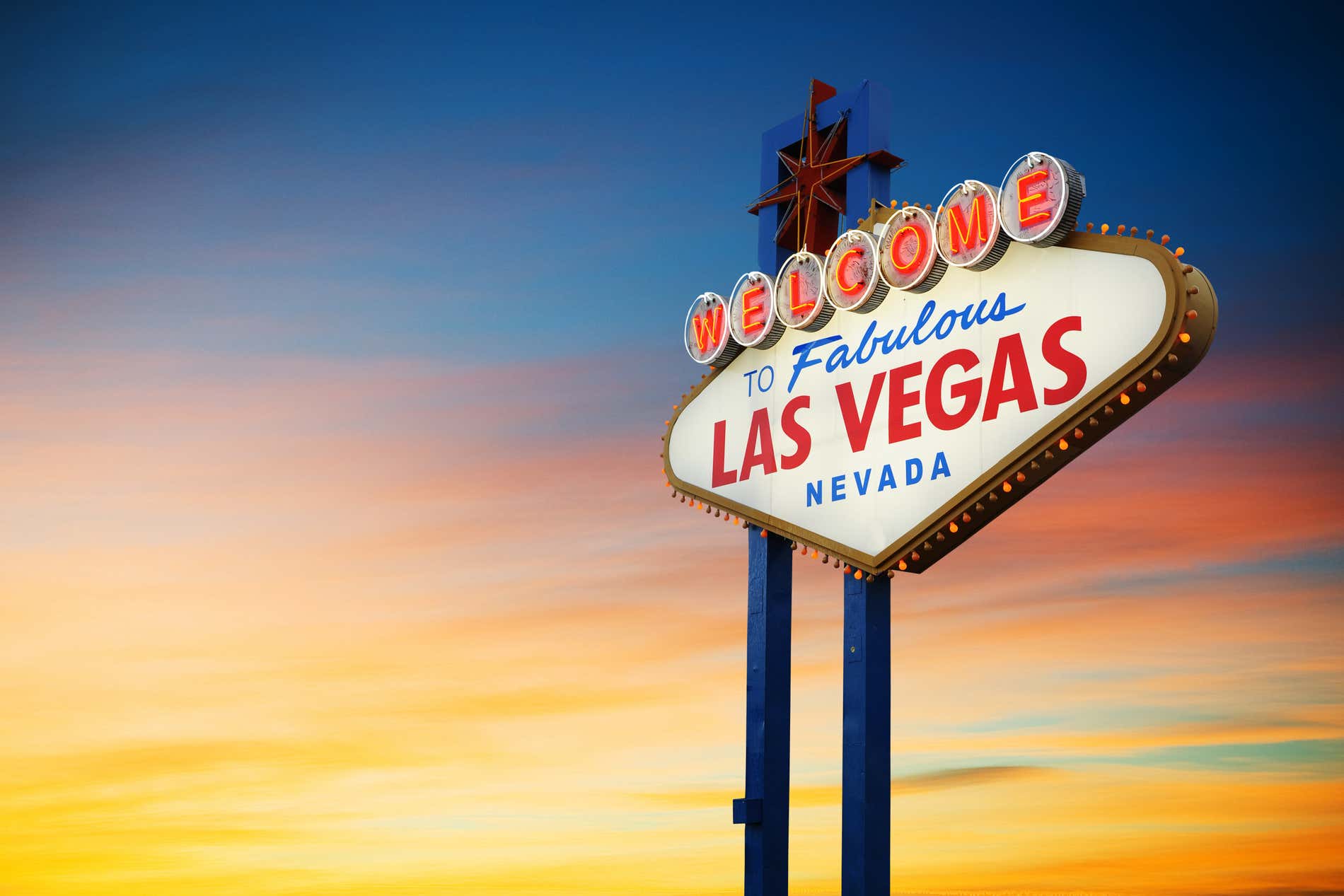Ghent in 1 day
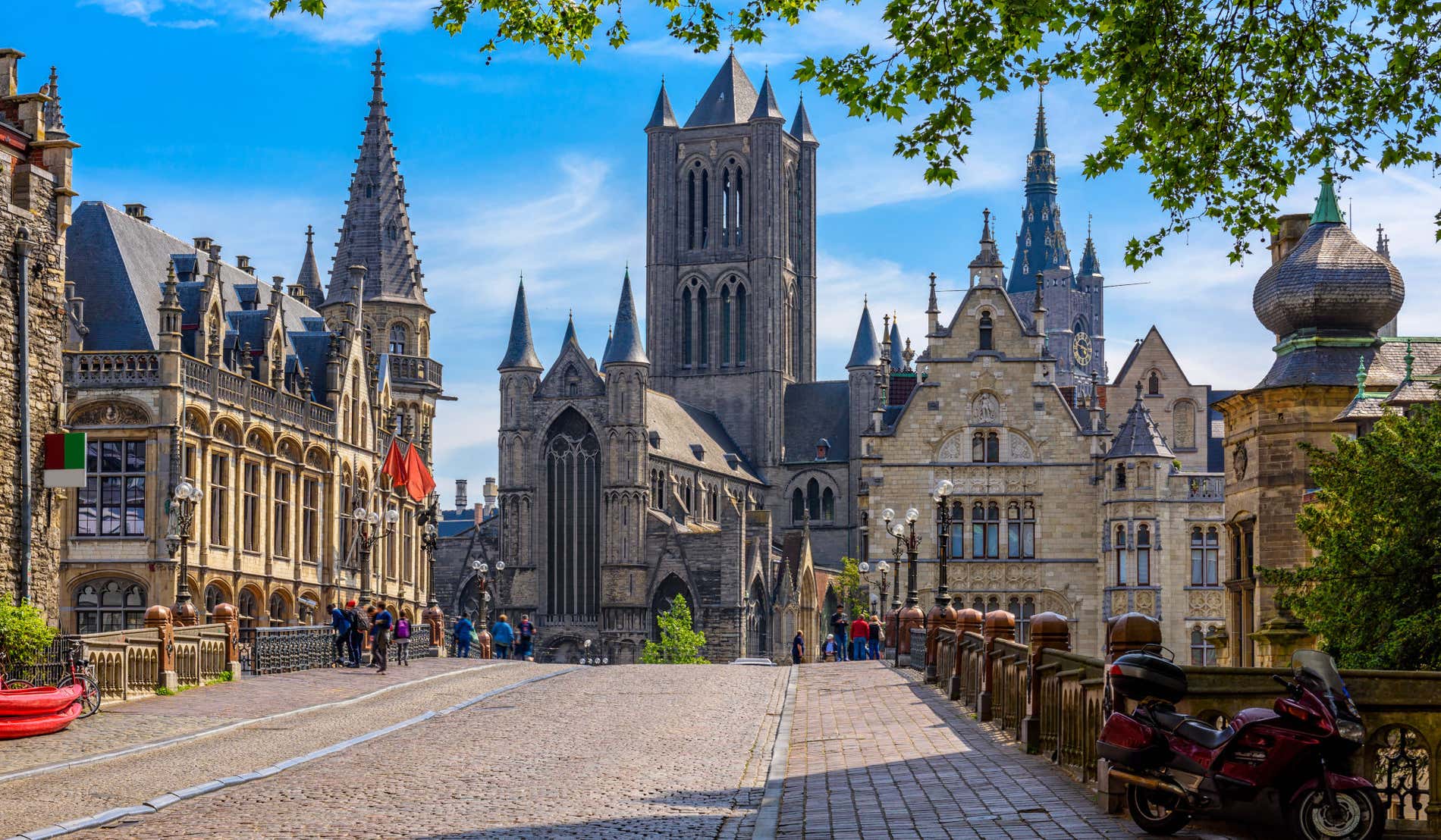
Flanders, Belgium’s northernmost region, is home to beautiful medieval canal towns, that look like something out of a fairy tale. One of them is the capital of the province of East Flanders. At Civitatis we’ve got your itinerary to visit Ghent in 1 day covered!
Ghent is a city that is full of history. In fact, it was here that Emperor Charles I of Spain and V of Germany was born: the most powerful man in Europe in the 16th century. The legacy of the Habsburg monarch and his entire dynasty is still very present in the streets of Ghent.
If you only have 24 hours in Ghent, pay close attention to the following recommendations. The size of the Flemish city is perfect for a day trip. And its proximity to Brussels (only half an hour by train) makes it an ideal destination for a day trip! Get the most out of Ghent in 1 day!
St. Bavo’s Cathedral and its famous Mystic Lamb
Why not start off by visiting St Bavo’s Cathedral, an architectural gem in the Brabantine Gothic style? Charles of Habsburg, the future Holy Roman Emperor, was baptised in this church on 7 March 1500. Beyond its historical significance, it’s worth visiting Ghent’s Sint-Baafsplein square just to admire the façade and bell tower of St. Bavo’s Cathedral.
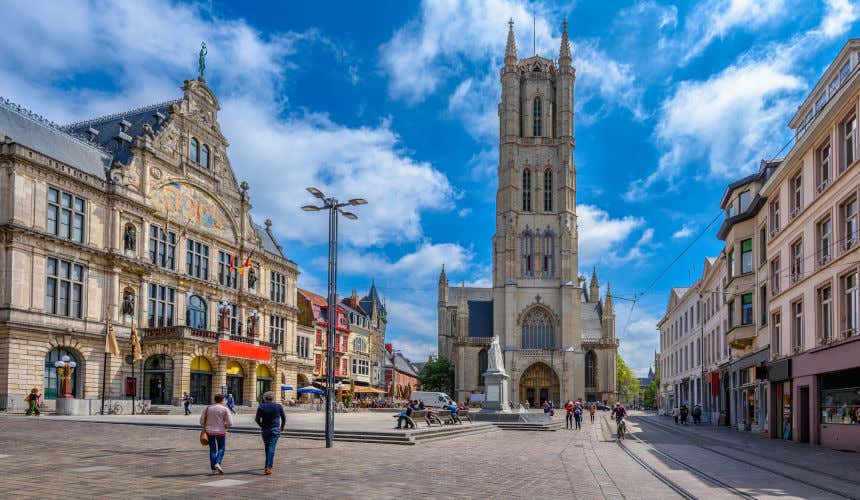
Inside the church is one of Belgium’s greatest works of art. This is the altarpiece ‘The Adoration of the Mystic Lamb’, the work of the brothers Hubert and Jan van Eyck. This polyptych, also known as the Ghent Altar, represents the redemption of man through the sacrifice of Jesus.
St. Bavo’s Cathedral also houses other important works of art that are worth seeing. One of the most outstanding is Solomon receives the Queen of Sheba. In this canvas, the work of Lucas de Heere, you’ll see an idealised representation of the Spanish king Philip II, the son of Emperor Charles V.
If you want to know other interesting facts about St. Bavo’s Cathedral, check out the following website Ghent Guided Tour, as part of its route runs alongside the church.
The Castle of the Counts of Flanders and a very special lamppost
Another must-see monument in Ghent is the Gravensteen or Castle of the Counts of Flanders. This imposing fortress, situated on one of the canals of the River Lys, is a must on any day trip to Ghent. However, it should be noted that many tourists tend to think that it was in this castle that Charles V was born. However, the truth is that the emperor came into the world in Prinsenhof. Although this palace is no longer standing, it now gives its name to a district of Ghent.
In any case, the interior of the castle of the Counts of Flanders is well worth a visit. Inside this fortress you’ll find an outstanding Museum of the Middle Ages which exhibits a multitude of weapons and instruments of torture. Other pieces such as models, plans and maps complete an exhibition that provides first-hand knowledge of what daily life was like in those years.
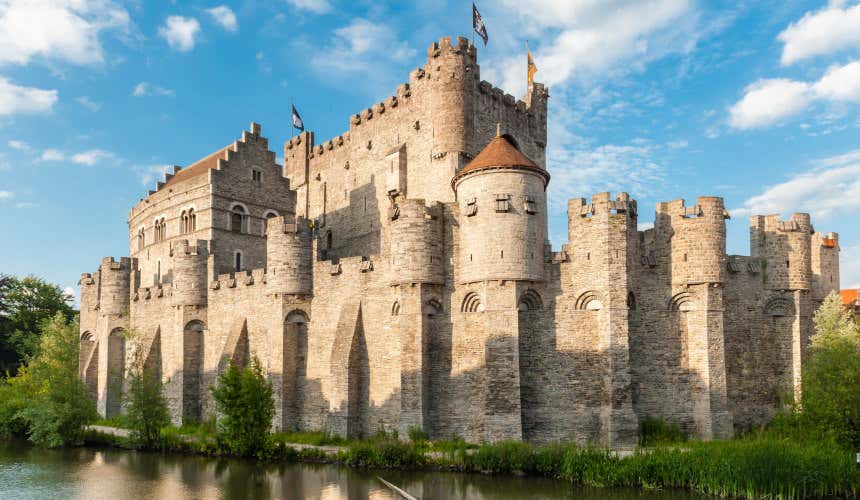
Keep your eyes peeled to spot the flashing street lamp in front of the castle. But do you do you know why it flashes, almost as if it’s broken awaiting repair? This lantern, located on the Sint-Veerleplein square, is directly connected to the Ghent Maternity Hospital. So every time a new baby is born in the city, the lantern emits a flash that is also visible from the castle’s battlements.
Under the lamppost, there is a plaque dedicated to children born in Ghent. Not everyone visiting the castle notices this point, so don’t miss it!
The Graslei and Korenlei quays, Ghent’s most iconic sight
Now we have a game for you. Type the word “Ghent” into any image search engine and what is the first that will pop up? The first pictures will probably be of the Graslei and Korenlei quays. And no wonder, as this area of the city is the most photographed place in Ghent. So of course you can’t miss out on seeing this iconic spot.
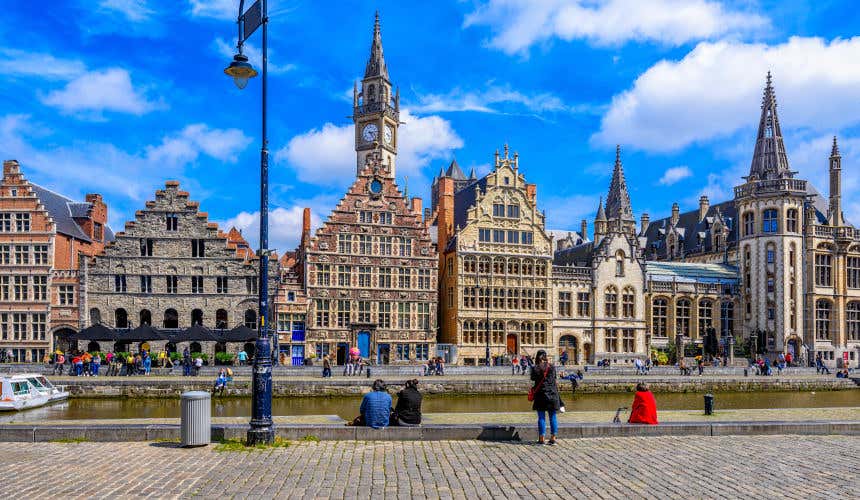
The Graslei and Korenlei quays, located on both banks of one of the canals of the River Lys, are part of Ghent’s most recognisable sites. It’s also a popular spot for tourists, as it’s the departure point for canal boats. The quays also offer a privileged view of the typical Flemish houses that line the banks.
Another highlight for viewing the quays is St Michael’s Bridge, the city’s best-known footbridge. The most famous and recognisable images of Ghent are taken from this bridge.
On the Ghent Free Tour you’ll learn about the history of the picturesque Graslei and Korenlei quays.
Belfort, the bell tower of Ghent
Between St. Nicholas Church and St. Bavo’s Cathedral stands the Belfort, Ghent’s bell tower. This 91-metre (298 feet) high tower is one of the Belgian and French bell towers listed as a World Heritage Site. This recognition alone makes it well worth a visit.
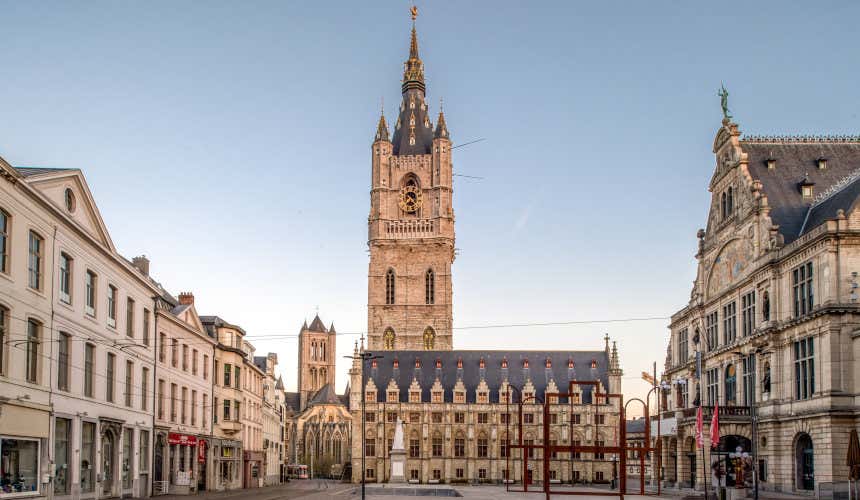
The climb up to the bell tower can be a bit of a challenge – over 100 steps! However, the climb is well worth it. From the top floor, you can get the best views of Ghent.
On the way down from the bell tower, it’s also worth stopping to admire the Brabantine Gothic architecture of the Cloth Hall or Lakenhalle. This 15th-century building gives Sint-Baafsplein square its typical Flemish architecture, flanked by the towers of the Belfort and the bell tower of St Bavo’s Cathedral. Incidentally, just a few metres away is the Ghent Town Hall, another beautiful façade worth checking out.
Werregarenstraat, the graffiti street
Not everything in the capital of East Flanders is Brabantine Gothic. There are other places, unknown to many tourists, that don’t usually appear in the guidebooks. One of them is Werregarenstraat, Ghent’s graffiti street. If you like street art, this is definitely the place for you.
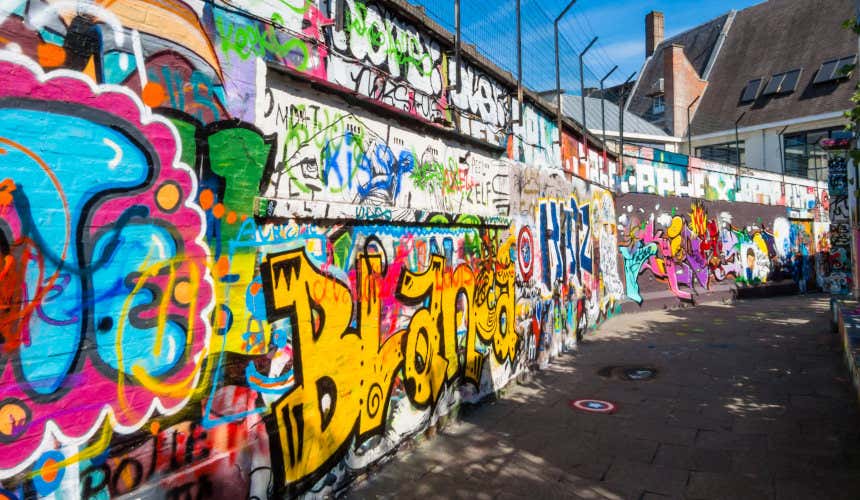
Werregarenstraat is more of an alleyway, although it’s perfectly safe to stroll through this place that stands out for its colourful graffiti. The works are of all kinds: from the typical signatures or tags to more avant-garde and transgressive works. Another advantage of this street is its location (just a five-minute walk from the cathedral), so if you have a day to visit Ghent, you can dedicate some time to getting to know this unique place.
Korenmarkt, the city’s liveliest square
To conclude these 24 hours in Ghent, the Korenmarkt, the city’s most lively square, is the ideal place to end your 24 hours in Ghent. Full of bars, pubs and restaurants, it’s the perfect place to enjoy a good Belgian beer.
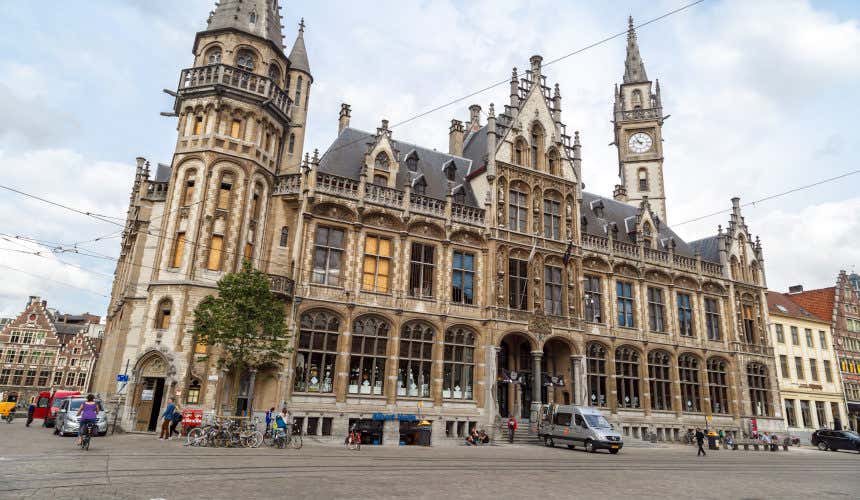
The square and its surroundings are good for shopping in Ghent. Jewellery shops, fashion and accessory shops and other shops are concentrated in this area, which is popular with both tourists and locals alike.
But that’s not all, this square also has a few hidden secrets. So what better way to end the day in the city than taking the Ghent Free Evening Tour to end on a high!







